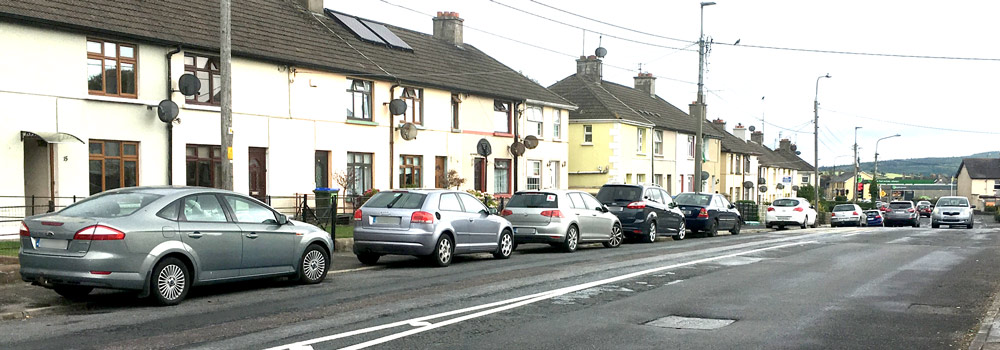
Figured provided to Councillors when they voted in favour of the "traffic calming" plan, which would see many residents lose their parking spaces, have been called into question. There is a substantial gap between the figures given to Councillors and those gathered by people on the ground. Click below to read more.
The March Meeting - Backing the Residents
Councillors originally backed residents in their opposition to the plan, but changed their minds at a Council meeting four months later. At the meeting in March 2015, the official Minutes state that a deputation from affected residents attended the meeting. Ms Noreen Morey and Ms Mary Margaret Ryan addressed the meeting and opposed the plan. The Minutes go on to state:
"The deputation was supported by the District Members" (Councillors)
The July Meeting - About Face
At the July meeting, all Councillors were present, except Councillors Denis Leahy and Tom Wood. There were five Councillors and ten officials present.
Officials told the meeting that the plan was aimed at reducing traffic speeds and to provide improved facilities for pedestrians and road users. At the March meeting, the residents' deputation had queried whether there were accident or speed statistics. However, none were provided.
Officials also told the meeting that the affected area is approximately one kilometre in lenght and stretches from the Bohercrowe Roundabout to the Church Street/O'Brien Street junction.
The meeting was told that:
"The proposal would reduce the number of parking spaces in the area from 73 to 65."
A walk of the area last Saturday showed that there are 109 parking spaces between the Bohercrowe Roundabout and the junction of Church Street and O'Brien Street. Yet, officials told the meeting there were only 73.
Officials went on to say that a "parking survey had been conducted by the Mid West Regional Design Office which indicated that the:
"peak demand in the area is 42 car park spaces"
A walking survey of the area at 9pm on a Saturday night, when most people would be expected to be parked at home, showed that there were 67 cars parked along the affected area. Local knowledge also showed that not all residents were parked in the area at the time. Yet, Officials told the meeting that the peak demand was for only 42 spaces.
On the basis of the information provided by the officials at the July meeting, Councillor John Crosse (Fine Gael) proposed that the plan be approved and he was seconded by Councillor Michael Fitzgerald (also Fine Gael). From the Minutes, there is no record of any dissenting voice, or a vote on the issue.
Clearly there is a massive discrepancy between a count done by residents and the data that was supplied to Councillors when they reversed their earlier support for the residents against the plan.
Double Standards
Also, there appears to be double standards being applied by the Council when making decisions about adequate provision of car parking spaces. All new developments must comply with the Council's own "Chapter 10 Development Management Guidelines and Design Standards". The Standards require one parking space per house with 1-3 bedrooms.
There are 112 front doors between the Bohercrowe Roundabout and the Church Street/O'Brien Street junction. That would suggest that 112 parking spaces are required, not 65 as provided for in the Council's plan. This does not include any parking requirements for vistors, something that is required under the Council's own planning guidelines.
Cork County Council expects 2 spaces per 1-3 bedroom house and it is noticeable that all new developments in this area also provide two spaces per house. Is this double standards when it comes to the needs of residents of longer-established residential areas like Davitt and Church Streets?
What seems to have been forgotten is that Davitt Street and Church Street are, first and foremost, residential streets. However, the Council seems to regard them as a roads engineering project, and not a place to live.


